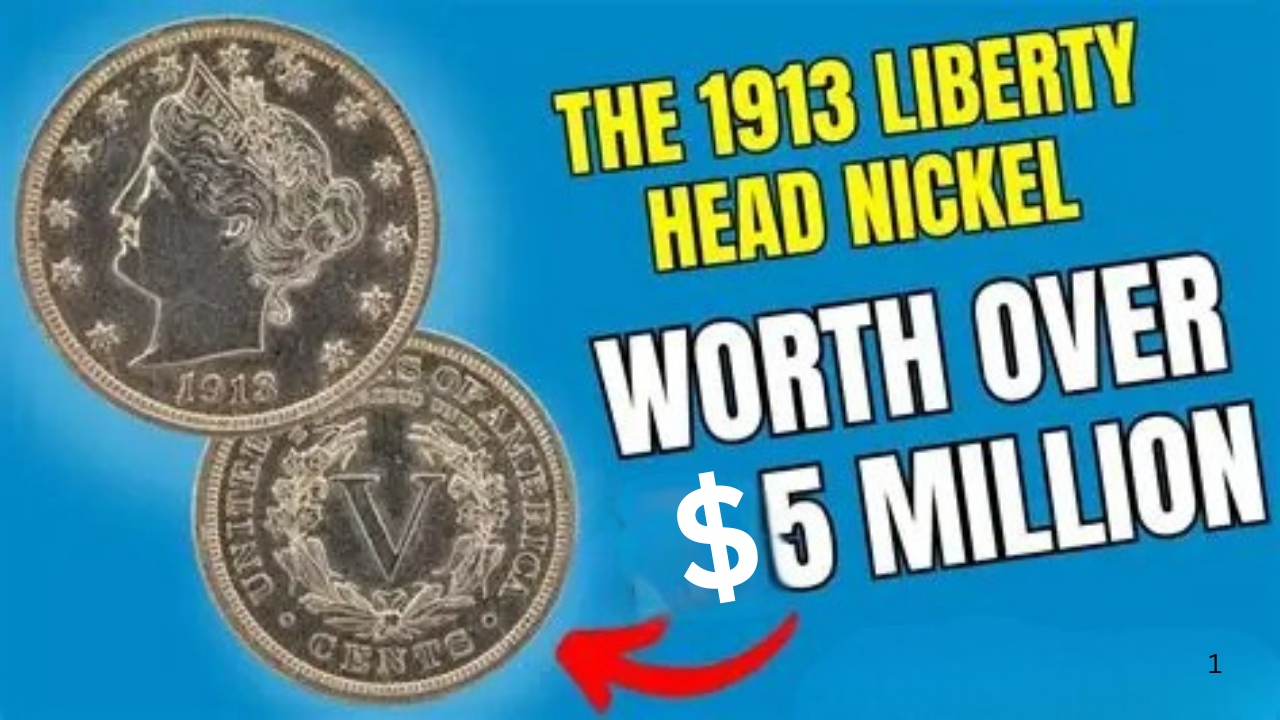Coins are not just money; they are artifacts of history, carrying stories of artistry, politics, and human passion. Among the most fascinating and valuable coins in the world, the 1913 Liberty Head Nickel stands as a true legend. With only five specimens known to exist, this coin is often referred to as the “King of American Coins.” In the world of numismatics, the 1913 Liberty Head Nickel is celebrated for its extreme rarity, mystique, and astonishing value—reaching as high as $5 million in private sales and auctions.
This long-form exploration takes you deep into the history, rarity, discovery, and value of the 1913 Liberty Head Nickel. Whether you are a seasoned collector or just curious about the coin that has fascinated enthusiasts for more than a century, this guide will uncover everything you need to know about this extraordinary piece.
The Origin of the 1913 Liberty Head Nickel

The story of the 1913 Liberty Head Nickel begins with a twist of history. The U.S. Mint officially transitioned from the Liberty Head design (1883–1912) to the Buffalo Nickel in 1913. Officially, no Liberty Head Nickels were supposed to be minted in that year. Yet somehow, five coins were secretly produced at the Philadelphia Mint.
These mysterious coins bypassed official records, leading to decades of speculation. Were they minted illegally by an insider? Were they test strikes? Regardless of their origin, their rarity skyrocketed their value.
Why Only Five Coins Exist
Only five 1913 Liberty Head Nickels are confirmed to exist today. Unlike regular coin issues, these were never authorized for circulation. Historians believe they were struck clandestinely by a Mint employee—possibly Samuel Brown, who later revealed their existence at the 1920 American Numismatic Association (ANA) convention.
The fact that only five examples escaped into the hands of collectors adds to their allure. Each coin has its own nickname and ownership history, making them numismatic celebrities.
The Famous Five 1913 Liberty Head Nickels
Each of the five coins has a well-documented provenance:
- The Eliasberg Specimen – Considered the finest and most pristine, once part of the Louis Eliasberg collection.
- The Olsen Specimen – Perhaps the most famous, featured in a 1970s episode of Hawaii Five-O.
- The Walton Specimen – Lost for decades until rediscovered in 2003 after being declared missing since the 1960s.
- The McDermott Specimen – Notable for its circulation wear; now housed in the ANA Money Museum.

- The Norweb Specimen – Another remarkable piece with a rich auction history, now in the Smithsonian Institution.
Auction Records and Value
The 1913 Liberty Head Nickel has broken records repeatedly. Some notable sales include:
- In 1996, one specimen sold for $1.485 million.
- In 2007, another fetched $5 million in a private transaction.
- In 2018, Heritage Auctions valued one at over $4.5 million.
Its rarity, provenance, and mystique ensure that whenever one comes to auction, it garners international attention.
Why Is It Worth $5 Million?
Several factors explain the astronomical value of this coin:
- Extreme Rarity – With only five in existence, demand far outstrips supply.
- Historical Mystery – Its unauthorized minting makes it a fascinating enigma.
- Cultural Fame – Its appearances in popular culture (TV, news, exhibitions) boost its allure.
- Condition – Some specimens remain in pristine mint state, adding to their desirability.
- Collector Competition – Ultra-wealthy collectors compete fiercely for ownership, driving up prices.
The Walton Specimen Rediscovery
One of the most dramatic stories in numismatics involves the Walton specimen. After George O. Walton died in a car accident in 1962, his coin collection was passed to his family. The 1913 Liberty Head Nickel he owned was deemed a counterfeit by experts, so it sat in a family closet for decades. In 2003, experts confirmed its authenticity, and the long-lost nickel finally returned to fame.
The Role of the Smithsonian Institution
Today, one of the five known specimens rests in the Smithsonian’s National Numismatic Collection. This ensures that even those who cannot afford to buy one of these million-dollar coins can still admire its beauty and historical significance.
The Design of the Liberty Head Nickel

The Liberty Head Nickel, designed by Charles E. Barber, features Lady Liberty on the obverse with her classical profile crowned by a wreath. The reverse displays a large “V” (representing five cents). Its simple yet elegant design embodies late 19th-century American coinage artistry.
Impact on Coin Collecting
The 1913 Liberty Head Nickel has inspired countless collectors to pursue rare coins. It represents the pinnacle of numismatic aspiration—the idea that a small, everyday object could hold life-changing value.
Collectors view it as not only a financial investment but also a tangible connection to history and mystery.
Modern Legacy
The legend of the 1913 Liberty Head Nickel continues to captivate new generations. Numismatic societies, documentaries, and even Hollywood have highlighted its story. For collectors, owning—or even viewing—one of these coins remains a dream come true.
Tips for Collectors Inspired by the 1913 Liberty Head Nickel
- Start Small: You don’t need millions—begin with affordable Liberty Head Nickels from the late 1800s.
- Verify Authenticity: Use professional grading services like PCGS and NGC.
- Learn Provenance: Coins with interesting histories often appreciate in value.
- Preserve Condition: Store coins in protective holders and avoid cleaning them.
- Stay Updated: Auction houses often feature record-breaking rare coins worth following.

Conclusion
The 1913 Liberty Head Nickel is more than just a coin; it’s a symbol of rarity, mystery, and numismatic glory. With only five known examples and a value exceeding $5 million, it stands at the top of collectible U.S. coins. Its story—full of intrigue, rediscovery, and astronomical sales—ensures its place as one of the most legendary artifacts in coin collecting history.
For both collectors and admirers, the 1913 Liberty Head Nickel serves as a reminder that even the smallest objects can hold priceless stories.
